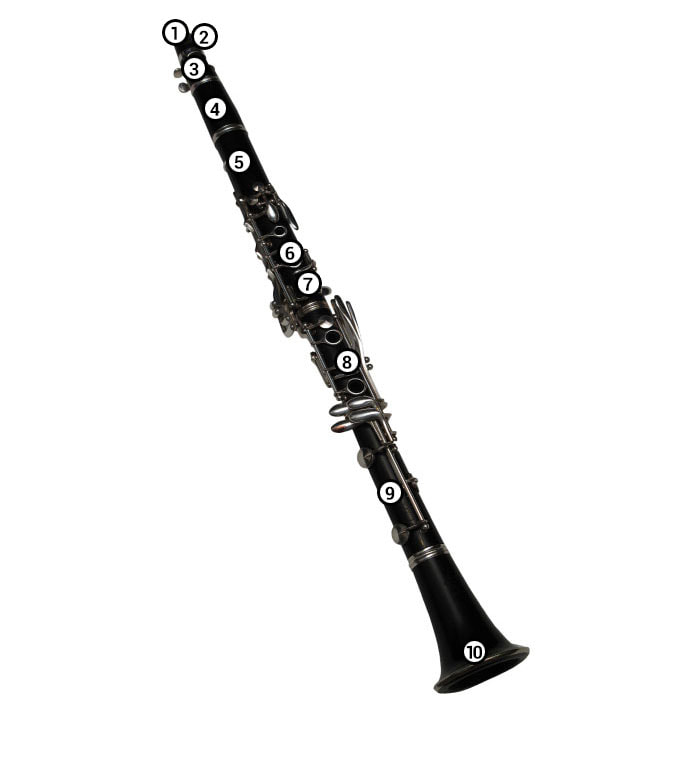The Clarinet |
Listen to the sound of a Clarinet
|
|
The clarinet is a woodwind instrument with a single reed and a long cylindrical body.
The clarinet produces a fluid sound when you blow air between a single reed and the mouthpiece. The body's surface has holes through which air can escape when left uncovered. Using levers and keys mounted on steel rods, the player covers and exposes different sets of holes to produce all the scale tones while blowing air through the clarinet. |
The clarinet family comprises several similar instruments but different sizes, such as the piccolo, soprano, alto, bass and contrabass clarinets. There are also instruments of the same size, with tubes of varying lengths. For example, there are various types of soprano clarinets, including the Bb and A soprano clarinets (the most common types seen today).
Clarinets come into five pieces: mouthpiece, barrel, upper joint, lower joint and bell. These pieces must be fitted together in precise alignment for proper playing. |






